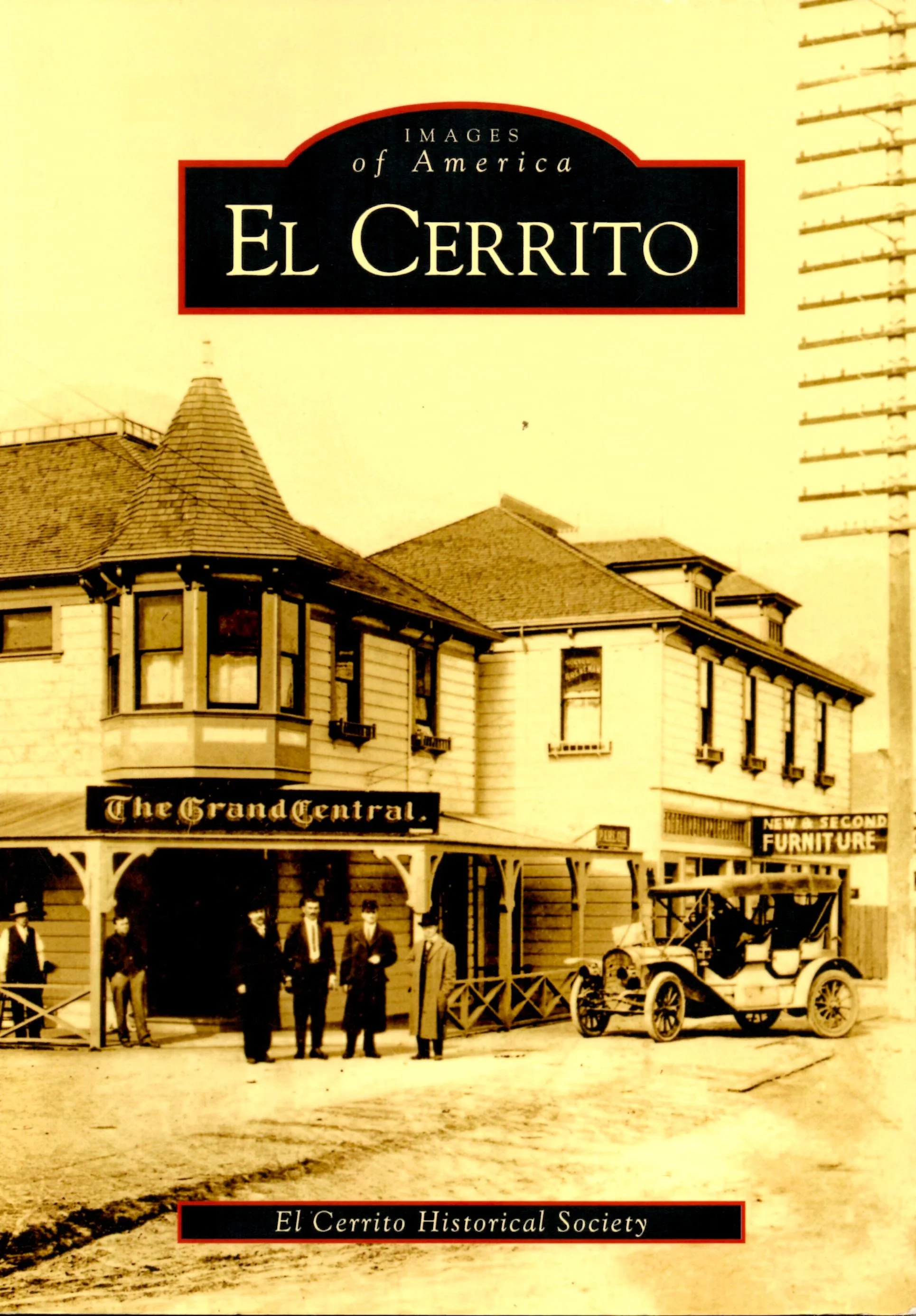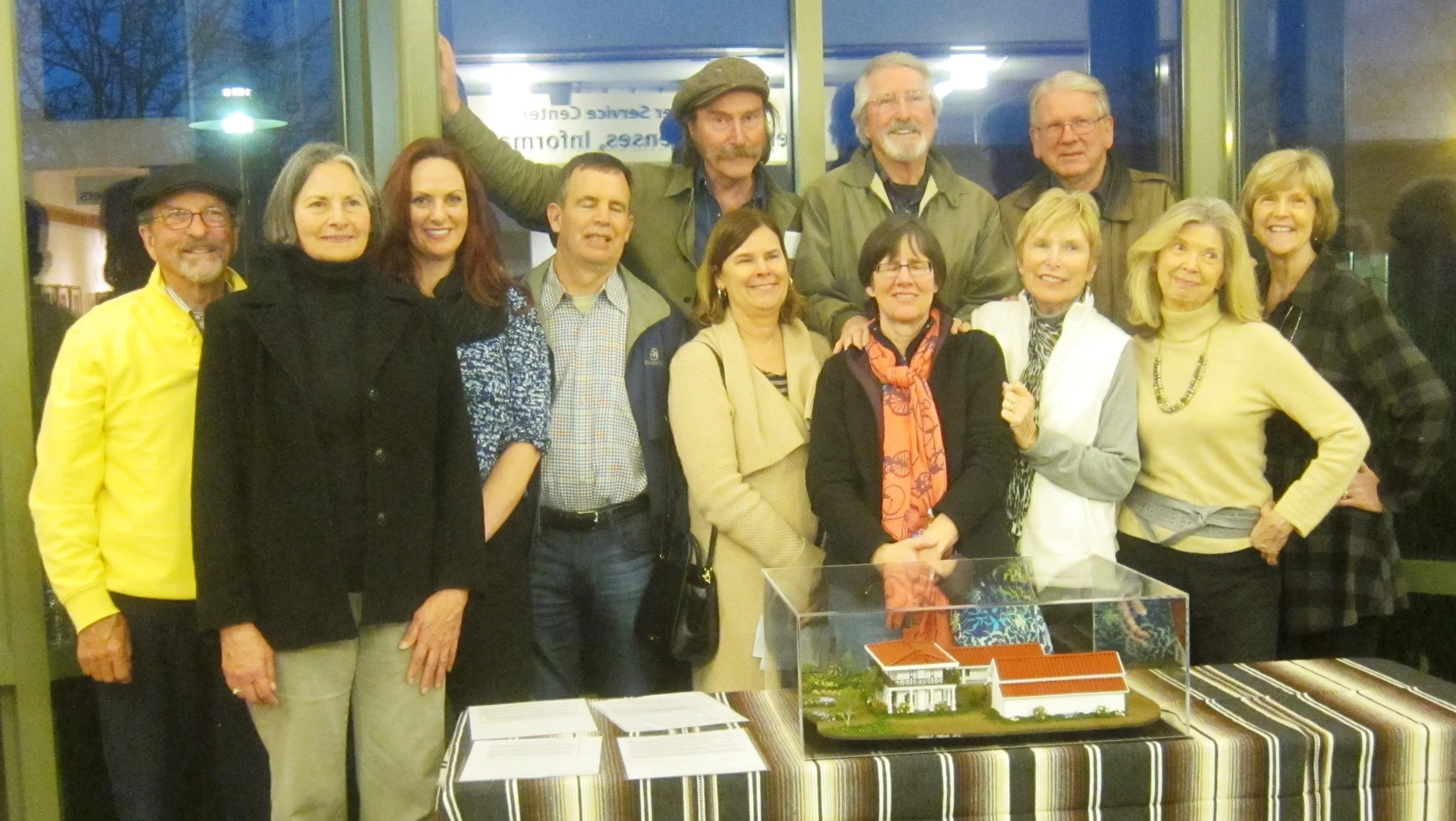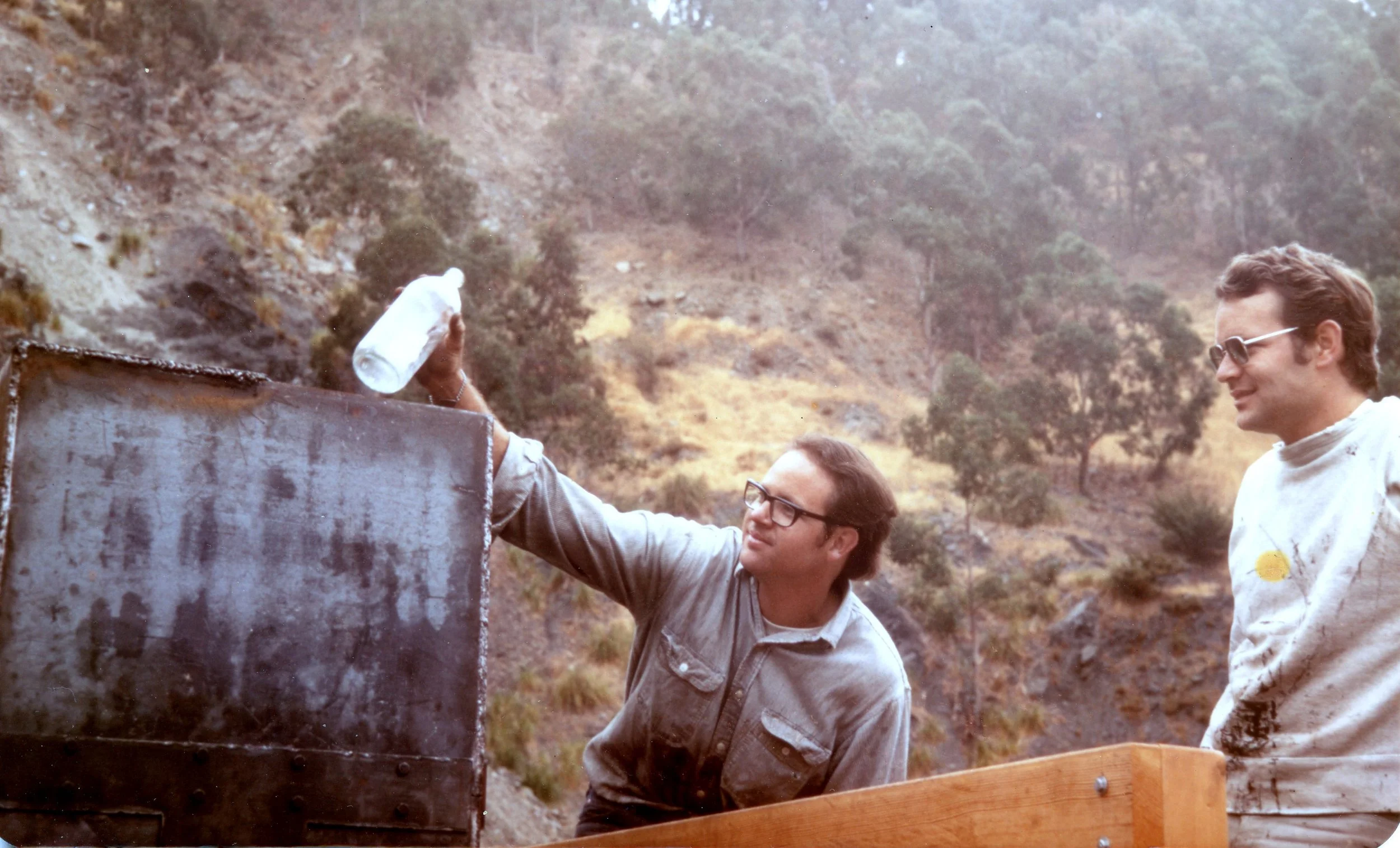El Cerrito Historical Society: 1975-2025
50 Years of Getting Things Done
Compiled by Dave Weinstein
During its 50 years the society has published books and pamphlets, produced films and oral histories, staged temporary exhibits and helped establish several permanent historical displays and markers. We have also put on hundreds of historical programs, luncheons and potlucks and swing dances, tours on foot, on bicycles and by boat.
The society has also successfully worked to preserve several historic places.
The society has assembled an extensive archive of photos and documents relating to our city’s history, including rare and unique items. Much of our material is available for perusal on our ever-growing website.
Notable events include:
1975: The El Cerrito Historical Society held its first regular meeting on Sept. 11, 1975 after informal meetings the previous year. Its goal was “identifying and preserving structures of historical (importance).” Other goals included compiling a history of the city. Among buildings identified as historic was the Mabuchi family’s Contra Costa Florist shop. Founders included Rich Bartke, who would serve as mayor and city councilmember, and City Clerk Lucille Irish.
Historical society co-founder Rich Bartke at the opening of city hall and the Shadi History Room in 2010. Photo by Dave Weinstein
1975: The society began collecting and preserving photos, documents and the occasional artifact relating to El Cerrito history. An early artifact was a clock from the original El Cerrito Library.
1977: The first-ever history of El Cerrito, “El Cerrito, Historical Evolution,” by Edward Staniford, was published by the society in an edition of 2,000 copies.
1978: The society published its first Forge newsletter, its title derived from the blacksmith forge of city pioneer Wilhem Rust. Historian George Collier would edit and write much of the Forge for almost a decade.
1980: A related publication, Sparks, was published for the first time, its name derived from the sparks that flew from Rust’s anvil. Sparks includes minutes of board meetings and such features as “Historic spots in El Cerrito.” Both publications have evolved and continue to be published today.
1980: Lucille Irish organized a historic fashion show at the city’s Open House Senior Center, the first of many senior-focused events over the years.
1981: Sundar Shadi, a founder of the society and one of its most important members, served as president. Shadi was famous regionally for floral displays and a beloved holiday display at his Arlington Avenue home.
1981: The society preserved a historical mural depicting El Cerrito in the Mexican era, moving it from a wall at Mechanics Bank to the city’s Community Center.
1983. George Collier’s book, “A Narrative History of Contra Costa County,” was published. Some of its contents had already appeared in the Forge.
1993. Sundar and Dorothy Shadi promised $100,000 (their donation would more than double) to help fund a new city hall if the building includes a history room.
1996: The society donated an Emmy Lou Packard painting of three children for display at the city’s Open House Senior Center in memory of society member Nancy Gans. Packard was an important Bay Area painter, sculptor, and muralist.
1997: On the occasion of the city’s 80th birthday, the society published a brochure entitled “El Cerrito, The Way It Was.”
2001: The society was the first El Cerrito organization to support the restoration of the Cerrito Theater, leading to the creation of Friends of the Cerrito Theater, which successfully worked to preserve the theater and re-open it as a cinema in 2006.
2003: Society member Tom Panas began researching the history of El Cerrito, interviewing many members of the Italian-American and later Japanese-American communities, among others.
2005: The society’s book, “El Cerrito: Images of America,” compiled and written by Tom Panas, was published, and celebrated at an event at the El Cerrito Library.
2006: The society published a well-illustrated brochure, “Remembering Our Local Japanese Heritage: The El Cerrito and Richmond Flower Growers.”
2009: To spur a survey of historic places, Tom Panas drafted the first version of a “historical context statement” that remains one of the most useful historical documents about the history of El Cerrito.
2009: Panas organized a display of historic photos focused on the Japanese-American families who made the El Cerrito-Richmond area one of the top spots for growing high quality cut flowers from the early to mid-20th century.
2010: The society celebrated the opening of the Dorothy and Sundar Shadi History Room at city hall. The room, which contains our archives and some displays, is regularly opened for researchers.
2011: The city installed historic sidewalk pavers along San Pablo Avenue. The society provided input and the text and images for the pavers.
2012: The society sponsored the first of many popular tours of the city’s former gambling and nightlife hot spots, as society member Chris Treadway did extensive research into El Cerrito’s raucous past.
El Cerrito has a raucous, colorful history, including a period from the early 20th century through the 1950s when it was home to gambling halls, nightclubs, prostitution and even a dog track. El Cerrito Historical Society photo
2013: The Chung Mei Home, a former home for Chinese boys, was deemed eligible for the National Register of Historic Places thanks to a nomination prepared by Tom Panas.
2013: Stege Sanitary District published “Where the Sewage Meets the Sea: Stege Sanitary District and the Growth of the East Bay,” a book marking the district’s centenary, by society leader Dave Weinstein. The book tells much of El Cerrito’s history.
2014: Thanks to educational campaigns and much negotiation, the society succeeded in saving two historic buildings in town, both of which had been threatened with demolition. One is the Rodini house, a home from the early 1900s. The other is the Mabuchi Contra Costa Florist shop. Both would be restored and incorporated into new residential projects.
From its start the society has advocated for preserving historic places. The Rodini house, threatened by development, was moved to one corner of its original site in 2021 to allow construction of condos. It has since been restored and will be made available for community use. Photo by Dave Weinstein
2016: Hobbyist-artist Charlie Moran crafted a meticulous model of the Victor Castro Adobe for the society, the rancho home of El Cerrito’s colonial pioneering settler.
The society is very much a social organization, as seen at this reunion of members of the Castro family organized by society leader Joanne Rubio in 2016. They are descendants of Victor Castro, whose rancho once encompassed all of El Cerrito. A model of the Castro Adobe made by Charlie Moran is on the table. Photo by Dave Weinstein
2017: During the city’s centennial, the society sponsored more events than any other organization. These included talks, walks, tours of historic buildings and films.
2019: The society celebrated the Year of Creedence Clearwater Revival, with two programs and exhibits. It was 50 years after the El Cerrito band first dominated the charts.
2019: The grand opening of Hana Gardens, built by Eden Housing, celebrated not just the addition of 62 new units of affordable housing for seniors but also the rehabilitation of the former Mabuchi Contra Costa Florist shop. A set of interpretive signs and sidewalk panels were installed to tell the story of the area’s Japanese-American community.
2021: Society leader Pat Durham worked with colleagues to produce a movie on the city’s Martin Luther King Jr. celebration, one of the longest running such events in the Bay Area.
2022: The society spearheaded a celebration marking the 50th anniversary of El Cerrito’s recycling center, which has become nationally known for its success and longevity. 2017: During the city’s centennial, the society sponsored more events than any other organization. These included talks, walks, tours of historic buildings and films.
2019: The society celebrated the Year of Creedence Clearwater Revival, with two programs and exhibits. It was 50 years after the El Cerrito band first dominated the charts.
2019: The grand opening of Hana Gardens, built by Eden Housing, celebrated not just the addition of 62 new units of affordable housing for seniors but also the rehabilitation of the former Mabuchi Contra Costa Florist shop. A set of interpretive signs and sidewalk panels were installed to tell the story of the area’s Japanese-American community.
2021: Society leader Pat Durham worked with colleagues to produce a movie on the city’s Martin Luther King Jr. celebration, one of the longest running such events in the Bay Area.
2022: The society spearheaded a celebration marking the 50th anniversary of El Cerrito’s recycling center, which has become nationally known for its success and longevity.
The city’s recycling center has outlasted similar efforts in other communities that started in the early 1970s and has become a landmark both within the city and in the wider recycling community. The society celebrated the center’s history during its 50th anniversary in 2022. El Cerrito Historical Society photo
2023: The society put on its first Historic Photo Contest, brainchild of Dianne Brenner, its chief organizer. More than 75 photos were submitted and two receptions at two exhibit locations were well attended.
2024: The society produced a film focusing on Tom Panas’s popular tour of Sunset View Cemetery and screened it at Rialto Cinema Cerrito to a standing-room only crowd. Michael B. Freeman’s film used the tour to tell much of the city’s history.
2024: The society developed a working relationship with students and teachers at El Cerrito High School, as president Jon Bashor gets students to write articles, do research, and help digitize our archives.
2024: The society publicized efforts by Down Home Music, the Arhoolie Foundation and Les Blank Films to successfully preserve their historic building and businesses.







